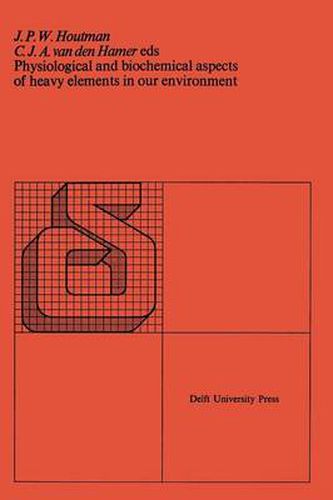Readings Newsletter
Become a Readings Member to make your shopping experience even easier.
Sign in or sign up for free!
You’re not far away from qualifying for FREE standard shipping within Australia
You’ve qualified for FREE standard shipping within Australia
The cart is loading…






This title is printed to order. This book may have been self-published. If so, we cannot guarantee the quality of the content. In the main most books will have gone through the editing process however some may not. We therefore suggest that you be aware of this before ordering this book. If in doubt check either the author or publisher’s details as we are unable to accept any returns unless they are faulty. Please contact us if you have any questions.
In the last few years the interest in the behavior and possible function of trace elements in biological systems has strongly increased. This seems to be stimulated by three different factors: i. e. 1. the slowly growing notion about the importance of some essential elements in the metabolism of plants and animals, including man, 2. the increasing extent of environ mental contamination caused by the disposal of heavy elements - both essential and toxic - and 3. the increasing sensitivity achieved in the analysis of these elements by modern techniques. The impact of the last mentioned development has been strong. Enormous improvements have indeed been made in lowering the limits of sensitivity of analytical methods maintaining at the same time good precision. Though there is a strong competition between some techniques, neutron activation analysis shows special advantages for multi-element analyses in organic materials. As a result a relatively important part of the literature on trace element behavior in the biosphere, though often phenomenologic in character, can be found in journals and transactions of symposia involving radiochemistry. This phenomenon does not readily stimulate the communication and scientific exchange with nutritional, toxicological, medical or biochemical experts who study the metabolic pathways of trace elements.
$9.00 standard shipping within Australia
FREE standard shipping within Australia for orders over $100.00
Express & International shipping calculated at checkout
This title is printed to order. This book may have been self-published. If so, we cannot guarantee the quality of the content. In the main most books will have gone through the editing process however some may not. We therefore suggest that you be aware of this before ordering this book. If in doubt check either the author or publisher’s details as we are unable to accept any returns unless they are faulty. Please contact us if you have any questions.
In the last few years the interest in the behavior and possible function of trace elements in biological systems has strongly increased. This seems to be stimulated by three different factors: i. e. 1. the slowly growing notion about the importance of some essential elements in the metabolism of plants and animals, including man, 2. the increasing extent of environ mental contamination caused by the disposal of heavy elements - both essential and toxic - and 3. the increasing sensitivity achieved in the analysis of these elements by modern techniques. The impact of the last mentioned development has been strong. Enormous improvements have indeed been made in lowering the limits of sensitivity of analytical methods maintaining at the same time good precision. Though there is a strong competition between some techniques, neutron activation analysis shows special advantages for multi-element analyses in organic materials. As a result a relatively important part of the literature on trace element behavior in the biosphere, though often phenomenologic in character, can be found in journals and transactions of symposia involving radiochemistry. This phenomenon does not readily stimulate the communication and scientific exchange with nutritional, toxicological, medical or biochemical experts who study the metabolic pathways of trace elements.